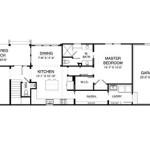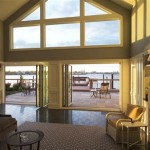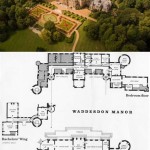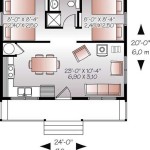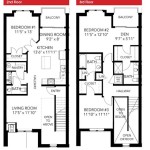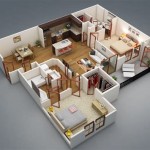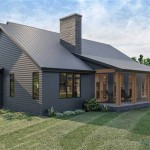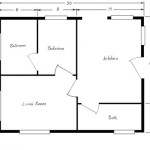1500 Sq Ft Lake House Plans: Design Considerations and Functional Layouts
Lake house plans for a 1500 sq ft dwelling represent a popular choice for individuals and families seeking a balance between comfortable living space and manageable maintenance. This size provides ample room for essential amenities and gathering areas while remaining relatively compact, potentially reducing construction costs and property taxes. These plans are particularly well-suited for weekend getaways, seasonal residences, or even smaller full-time homes for those who prioritize outdoor living and the tranquility of a lakefront environment.
The primary focus when selecting or developing 1500 sq ft lake house plans should be maximizing the connection with the surrounding natural environment. Large windows, expansive decks, and strategically positioned outdoor living spaces are crucial elements in creating a cohesive living experience that seamlessly blends the interior and exterior. Thoughtful consideration must also be given to the specific characteristics of the lakefront property, including topography, sun exposure, prevailing winds, and local building codes, to ensure the design is both aesthetically pleasing and functionally optimized.
Furthermore, the interior layout must be carefully planned to provide comfortable accommodations for the intended use. This includes considerations for the number of bedrooms and bathrooms, the size and functionality of the kitchen and living areas, and the inclusion of practical spaces such as mudrooms or storage areas for water sports equipment. The overall design aesthetic should reflect the desired ambiance, whether it be rustic and cozy or modern and minimalist, while prioritizing durability and low-maintenance materials that can withstand the elements.
Key Considerations for 1500 Sq Ft Lake House Plans
Several key factors influence the design and functionality of 1500 sq ft lake house plans. These considerations range from space optimization to adherence to environmental regulations, all contributing to a successful and enjoyable lake house experience.
Space Optimization and Layout Efficiency
Given the relatively limited square footage, efficient use of space is paramount. Open-concept floor plans are frequently employed to maximize the feeling of spaciousness and improve flow between living areas. This often involves combining the kitchen, dining, and living spaces into a single, unified area, allowing for greater flexibility and natural light penetration. The use of vaulted ceilings can also contribute to a more expansive feel, drawing the eye upward and creating a sense of airiness.
Strategic storage solutions are also essential in a smaller lake house. Built-in cabinetry, under-stair storage, and multi-functional furniture can help minimize clutter and maximize usable space. Utilizing vertical space, such as tall shelving or loft areas, can provide additional storage without sacrificing valuable floor space. Careful consideration should be given to the placement of furniture and appliances to ensure a comfortable and functional layout.
Furthermore, the layout should prioritize the view of the lake. Orienting the main living areas towards the water and incorporating large windows or sliding glass doors can create a strong visual connection with the surrounding landscape. Decks, patios, and balconies can extend the living space outdoors, providing additional areas for relaxation and entertainment while enjoying the lake views.
Material Selection and Durability
Lake houses are often exposed to harsh weather conditions, including strong winds, rain, and extreme temperatures. Therefore, selecting durable and weather-resistant materials is crucial for ensuring the longevity of the structure. Exterior materials such as cedar siding, stone veneer, or fiber cement siding are popular choices due to their resistance to moisture, rot, and insects.
The roofing material should also be chosen for its durability and longevity. Asphalt shingles, metal roofing, or tile roofing are all viable options, depending on the climate and aesthetic preferences. Proper insulation is essential for maintaining a comfortable indoor temperature and reducing energy consumption. Spray foam insulation or fiberglass batts can provide effective insulation against both heat and cold.
Interior materials should also be selected for their durability and ease of maintenance. Hardwood flooring, tile flooring, or laminate flooring are all suitable options for living areas, while tile or vinyl flooring are often preferred in bathrooms and kitchens due to their water resistance. Low-VOC paints and finishes should be used to minimize indoor air pollution. Choosing materials that require minimal upkeep will contribute to a more relaxed and enjoyable lake house experience.
Integration with the Lakefront Environment
A successful lake house design seamlessly integrates with the surrounding environment. This involves considering the topography, vegetation, and wildlife of the lakefront property. The house should be positioned to minimize its impact on the natural landscape and to take advantage of the best views and sun exposure.
Landscaping should complement the natural environment and require minimal maintenance. Native plants are often a good choice, as they are well-adapted to the local climate and require less watering and fertilization. Erosion control measures may be necessary to protect the shoreline from erosion. This could involve using retaining walls, riprap, or vegetation to stabilize the soil.
Consideration should also be given to the impact of the lake house on the lake itself. Proper wastewater management is essential to prevent pollution and protect the water quality. Septic systems should be properly maintained and inspected regularly. Stormwater runoff should be managed to prevent erosion and pollution of the lake. Minimizing the use of fertilizers and pesticides can also help protect the water quality.
Functional Layout Options for 1500 Sq Ft Lake Houses
The layout of a 1500 sq ft lake house should be carefully considered to maximize functionality and comfort. Several layout options are available, each offering different advantages and disadvantages depending on the specific needs and preferences of the homeowner.
One-Story Ranch Style
A one-story ranch-style lake house offers the advantage of easy accessibility and a seamless connection with the surrounding landscape. This layout is particularly well-suited for individuals with mobility issues or for those who prefer a single-level living space. The open-concept floor plan typically incorporates a combined kitchen, dining, and living area, with bedrooms and bathrooms located along one side of the house. A large deck or patio can extend the living space outdoors, providing ample room for relaxation and entertainment.
This layout can be easily adapted to accommodate various design styles, from rustic and traditional to modern and minimalist. The horizontal orientation of the ranch-style house can create a sense of spaciousness and tranquility. However, it may require a larger footprint than a two-story house, which could be a limitation on smaller lakefront properties.
Two-Story Design
A two-story lake house can maximize the use of space on a smaller lot and provide better views of the lake from the upper floors. The ground floor typically houses the main living areas, such as the kitchen, dining, and living room, while the bedrooms and bathrooms are located on the upper floor. This separation of living and sleeping areas can provide greater privacy and quiet.
Two-story designs can also incorporate a walkout basement, which can provide additional living space or storage. A deck or balcony on the upper floor can offer stunning views of the lake. However, stairs can be a challenge for individuals with mobility issues. Careful planning is required to ensure that the upper floor is adequately insulated and that the staircase is safely and conveniently located.
Loft Style Design
A loft-style lake house can create a sense of spaciousness and openness, while still providing distinct living areas. This layout typically features a large, open living area with a soaring ceiling and a loft area overlooking the main floor. The loft can be used as a bedroom, office, or recreational space. The kitchen and bathrooms are typically located on the ground floor.
Loft-style designs can be particularly appealing for those who appreciate a modern and minimalist aesthetic. The open layout allows for plenty of natural light and ventilation. However, the loft area may lack privacy and can be difficult to heat or cool. Careful planning is required to ensure that the loft area is adequately ventilated and that the stairs or ladder leading to the loft are safely and conveniently located.
Adapting Plans to Specific Lakefront Properties
The successful implementation of 1500 sq ft lake house plans hinges on adapting the design to the unique characteristics of the lakefront property. The orientation of the house, the surrounding landscape, and local building codes all play a significant role in shaping the final outcome.
Site Analysis: A thorough site analysis is crucial before beginning the design process. This involves evaluating the topography, soil conditions, sun exposure, prevailing winds, and views of the lake. The location of utilities, such as water and sewer lines, should also be considered. This information will help determine the optimal placement of the house on the property and inform the design choices.
Orientation: The orientation of the house should be carefully considered to maximize sun exposure and views of the lake. Orienting the main living areas towards the south can maximize solar gain in the winter, while shading the house from the harsh summer sun. Large windows and sliding glass doors should be positioned to take advantage of the best views of the lake. The prevailing winds should also be considered to ensure adequate ventilation and to minimize the impact of strong winds on the structure.
Local Building Codes: Adhering to local building codes is essential for ensuring the safety and legality of the construction. These codes may specify requirements for setbacks, height restrictions, erosion control, and wastewater management. Obtaining the necessary permits before beginning construction is crucial to avoid delays and penalties. Consulting with a local architect or contractor can help navigate the complexities of the local building codes and ensure compliance.

260 Best 1500 Sq Ft Lake Plans Open Ideas House How To Plan Floor

Lake Front Plan 1 679 Square Feet 2 3 Bedrooms Bathrooms 5032 00248

2 Bed Country Lake House Under 1 500 Square Feet Of Living Space 680048vr Architectural Designs Plans

260 Best 1500 Sq Ft Lake Plans Open Ideas House How To Plan Floor

2 Bed Country Lake House Under 1 500 Square Feet Of Living Space 680048vr Architectural Designs Plans

Lake Front Plan 1 793 Square Feet 3 Bedrooms 2 Bathrooms 5738 00002

Waterfront House Plans The Plan

Best Lake House Plans Waterfront Cottage Simple Designs

Lake Front House Plan 1070 00129

Lake House Plans Specializing In Home Floor

